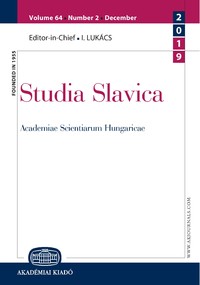К вопросу о страдательном залоге в языках, распространенных на берегу Балтийского моря, с акцентом на севернорусском диалекте
On Passive Voice in Languages Spoken in the Baltic Sea Region with an Emphasis on North Russian Dialect
Author(s): Árpád OroszSubject(s): Eastern Slavic Languages
Published by: Akadémiai Kiadó
Keywords: Circum-Baltic languages; areal linguistics; active voice; passive voice; subjecthood; past passive participles; North Russian dialect; Hanseatic League
Summary/Abstract: The two characteristics of the passive voice found in the North Russian dialect and in other Circum-Baltic languages, the accusative case of the patient or theme as an argument of a verb with passive morphology and intransitive verbs passivized raise a number of related questions. The author of the present paper explores the issues under discussion from an areal-historical perspective, concluding that the aforementioned languages have a tendency for the agent to be the same element as the subject and the patient or theme to be the same element as the (direct) object of the sentence. In the North Russian dialect, we can see an example where the above fact holds true irrespective of whether the verb has an active or a passive morphology as the theme of the sentence assumes the accusative case regardless of whether it is an argument of a verb in the active or in the passive voice. The question as to what lexical elements can function as subjects is itself interesting. Moreover, there seems to be a correlation between what level of abstraction the syntactic category of subject has reached in a language and the existence of a pure passive mean- ing. The less abstract the category of subject is, as in case of Circum-Baltic languages, the farther structures with a passive morphology seem to be from a pure passive meaning. In languages such as English, however, where virtually any noun can function as a subject, there seems to be a pure passive meaning and there is only one morphological way of form- ing passive sentences. The nature of linguistic similarities found in genetically less related languages spoken in the same area has been given a number of varied accounts. The most salient of them ap- pears to be B. Drinka’s explanation based on the influence of Western European languages on ones spoken in the East of the area where once the Hanseatic League existed in the middle ages and I. Seržant’s theory concerning the foregrounding of the agent as passive structures with a stative interpretation gradually assumed a dynamic one. In fact, participles in the North Russian dialect ending in -n / -t can express a dynam- ic, that is, eventive interpretation with a perfect meaning and can even co-occur with the -sja / -s’ postfix, the latter phenomenon being absolutely unimaginable in Standard Russian, where the two affixes are in complementary distribution. The author assumes that the topic should be studied from the perspective of sociology and cultural anthropology as well since linguistic similarities and differences often reflect similarities and differences in thinking beyond the realm of linguistics.
Journal: Studia Slavica Academiae Scientiarum Hungaricae
- Issue Year: 64/2019
- Issue No: 2
- Page Range: 371-382
- Page Count: 12
- Language: Russian

